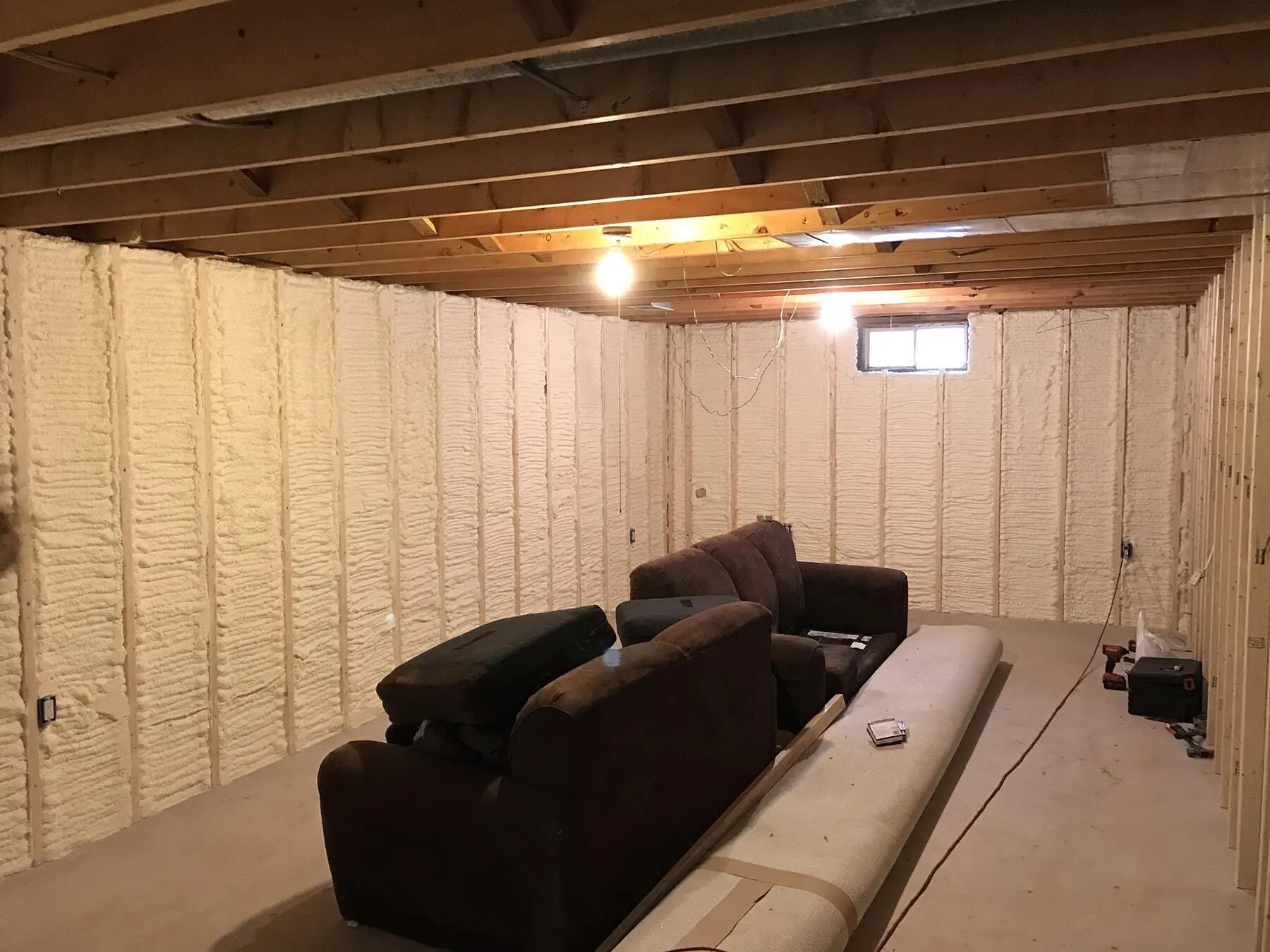Insulating the house's basement with spray foam is the perfect solution to turn your basement into a comfortable living space. This excellent thermal barrier is one of the best ways to keep your foundation warm and energy-efficient.
To properly insulate your basement, you must prepare the space by cleaning and removing any debris from the walls, water line pipes, and other areas. Seal any gaps or cracks in the walls and foundation to ensure efficiency. After that, you can start insulating the walls, ceiling, and floor with spray foam.
Today, we will guide you on insulating your basement with our superior Vega foam insulation kit and what to consider when performing the task. By the end of this article, you'll clearly understand the process.
How to Insulate Basement With Spray Foam Insulation: Steps to Follow
We recommend using our Vega Bond spray foam insulation kits as they are the most effective solution for basement insulation. These insulation kits include gloves, goggles, PPE, masks, foam applicator guns, and more. Here are the essential steps you need to follow to complete the task:
Materials You'll Need:
- Protective Gear:
- Safety goggles
- Mask designed for spray foam applications
- Disposable coveralls or work suit
- Gloves
- Caulk and caulk gun
- Vega Bond Closed-Cell spray foam insulation kit
- Dispensing gun for spray foam
- Utility knife or foam saw
Step 1: Preparing the Basement
Your basement must be prepared before you commence with the installation. Assess the condition of the walls and address any existing insulation, mold, or water issues.
Start by framing windows, doors, and openings with wood or metal furring to create a solid and even surface for insulation. Plan the wiring system and consider using conduit wiring if necessary to ensure proper installation and functionality.
Address any water or pipe issues to ensure a dry and secure foundation before proceeding with the spray foam insulation.
Also, consider local building code compliance, such as IBC 2603.4 and IRC R316.4, before insulating your basement with our spray foam insulation. Consult your local authorities to ensure your insulation project meets the necessary standards.
Step 2: Sealing Gaps
Gaps and cracks in the walls can allow air infiltration, leading to thermal loss and potential moisture seepage. So, before applying the spray foam insulation, thoroughly inspect the basement for any openings and seal them tightly.
Begin by cleaning the surfaces to remove dirt or debris from the cracks. Then, apply the sealant to the gaps, ensuring complete coverage.
Step 3: Insulating Walls
After sealing all the gaps, begin insulating the walls with spray foam. Make sure you have your protective gear on before you begin. Now spray the Vega Bond closed-cell foam insulation into the walls.
Apply the spray foam evenly and thoroughly between the studs, ensuring it adheres well to the studs and the concrete walls. Vega Bond's closed-cell nature provides excellent thermal barrier properties, preventing mold growth and dampness in basements.
Step 4: Insulating Ceiling
Insulate the ceiling to prevent heat loss and improve energy efficiency. Apply a layer of spray foam directly onto the ceiling, covering all areas evenly. You can use our professional-grade spray foam dispensing gun for the best results.
Pay special attention to sealing any defects in the ceiling to prevent air leakage. Allow the spray foam to cure completely before moving on to the next step.
Step 5: Insulating Floor
Now, insulate your basement floor for optimal insulation and energy efficiency. Before beginning, check for any moisture issues on the floor. Once you've confirmed that the floor is dry, you can proceed with the insulation process.
Start by installing a subfloor frame, which will serve as a base for the spray foam insulation. The frame should be securely attached to the walls, ensuring stability. Apply the spray foam insulation between the flooring and the concrete.
Be thorough and cover all areas, including the corners, creating a complete thermal barrier. This will prevent heat loss and keep your basement warm and comfortable.
Should I spray foam the entire house along with the basement?
For maximum energy efficiency, you should consider spraying foam insulation throughout the entire house, including the basement.
Insulating the entire house with spray foam creates a continuous thermal barrier that prevents air leakage and minimizes heat transfer. This helps to maintain a consistent and comfortable indoor temperature, reducing the need for heating and cooling and ultimately saving energy.
Does insulating an unfinished basement work?
Unfinished basements aren't necessary to insulate in warm climates, but it's a must in colder ones. Adding insulation to an unfinished basement can provide numerous benefits. In colder climates, insulation can help to retain heat and reduce energy costs.
Insulating the basement's walls, ceilings, and floors can reduce heat loss by up to 30%. It also helps to prevent moisture buildup, which can lead to mold and mildew growth. Furthermore, insulation can improve a home's comfort by making the basement livable.
Get the Best Basement Insulation for Better Energy Efficiency
Insulating your basement with our Vega Foam Insulation can provide numerous benefits, including energy efficiency, soundproofing, and enhanced overall insulation performance. This insulation can also help lower your carbon footprint.
Purchase the Vega Bond Closed-Cell Spray Foam Insulation Kit from our shop page and say goodbye to cold drafts in your basement.




